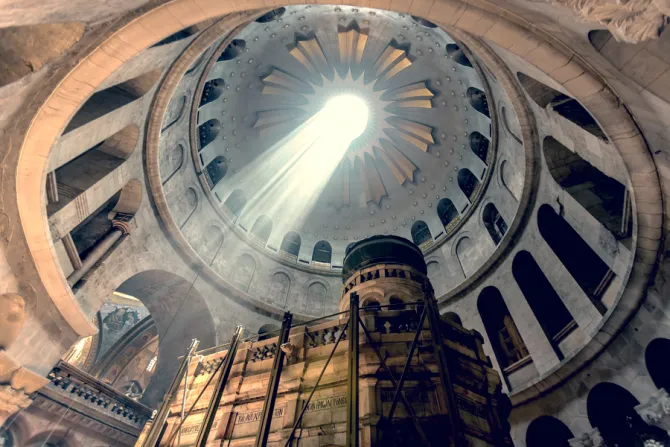Mar 31, 2017 / 02:02 am
Having just undergone an extensive restoration, the site of Jesus' tomb at the Church of the Holy Sepulchre is at risk for significant structural failure if nothing is done to reinforce its foundations, scientists have said.
"When it fails, the failure will not be a slow process, but catastrophic," Antonia Moropoulou, chief scientific supervisor with the National Technical University of Athens, told National Geographic in an exclusive interview.
A team of scientists with NTUA just recently completed a year-long restoration of the site believed to be the tomb of Jesus Christ in Jerusalem. National Geographic has been extensively covering the restoration process.
During the restoration process, the team of scientists determined that The Edicule (Latin for "little house"), a small shrine within the Church of the Holy Sepulchre that encloses Jesus' tomb, was resting on an unstable foundation of tunnels, channels, rubble and crumbling foundation mortar.
According to the Gospels, the body of Christ was laid in a new tomb hewn out of rock, in which no one had ever been buried. The Gospel of Mark details that the women who went to the tomb to anoint Christ's body instead found that he had risen.
Veneration of Christ's burial place dates back to St. Helena in the fourth century, who discovered and identified the tomb. St. Helena's son, Emperor Constantine, built the Church of the Holy Sepulchre in 326 and enshrined the tomb.
The shelf on which Christ's body was laid is the central point of veneration, which has been encapsulated by a 3-by-5 foot marble structure - the Edicule - since at least 1555.
Part of the reason for the unstable foundation is because the site was built on the remains of a limestone quarry that was once used to house tombs of upper class Jews.
Throughout the early history of the Christian church, various shrines surrounding the tomb of Jesus were built and subsequently destroyed, depending on who was in power.
The Edicule and the surrounding rotunda of the Church of the Holy Sepulchre, complete with massive 22-ton pillars, rests on this unstable foundation of rubble and tunnels today. The site sees nearly 4 million visitors a year.
While the structural integrity of the site has been a concern for almost 100 years, National Geographic reports, disputes between the three main Christian groups that control the site - the Greek Orthodox and Armenian Patriarchates of Jerusalem and the Roman Catholic Franciscan Custos of the Holy Land - and a lack of funds prevented much restoration progress from being made.
Now, scientists are working with Church authorities to determine the best plan for restoration work on the foundation, which is estimated to cost 6 million euro and would take about 10 months.
Archeologists are also hoping to take advantage of the process, which would expose important archeological sites for the first time in centuries.
Scientists on the restoration team with NTUA are compiling the latest data into a report, which will be given to Church authorities of the three main Christian groups, who must reach an agreement before the process moves forward.
"This work is a collective work," Moropoulou said. "It doesn't belong to us, it belongs to all humanity."


